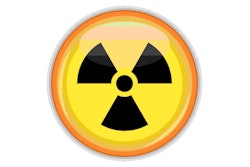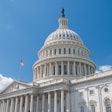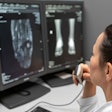A new study conducted by researchers from the Harvey L. Neiman Health Policy Institute (HPI) has reported that radiology workforce attrition is influenced by specialty and practice type and by gender.
"Significantly higher attrition was observed for female versus male radiologists, subspecialists versus generalists, nonacademic versus academic radiologists, and radiologists in practices with at least one rural site versus no rural sites," wrote a team led by Eric Christensen, PhD. The group's findings were published on October 1 in the American Journal of Roentgenology.
Continuing radiologist workforce trends such as increasing subspecialization and practice consolidation could affect radiologists' attrition rate, the authors noted. Their study included data from the Centers for Medicare and Medicaid Services' (CMS) National Downloadable Files for 298,396 radiologist-year observations from 41,432 radiologists who submitted claims between 2014 and 2022. The group also used CMS research identifiable files and a commercial Medicaid and Medicare Advantage claims dataset (Inovalon Insights) to identify radiologists no longer clinically active.
Overall, the authors noted that the odds of attrition were 37% higher among subspecialists than among generalists and 34% higher among nonacademic than among academic radiologists. They also reported the following:
Odds of attrition by type of radiologist | |
Type | Odds ratio (with 1 as reference) |
| Subspecialists vs. generalists | 1.37 |
| Women vs. men | 1.26 |
| Midwest vs. Northeast | 1.19 |
| Nonacademic vs. academic | 1.34 |
| Those in practices with at least one rural site vs. those with no rural sites | 1.16 |
| Shifts in radiology workforce attrition rate by type of radiologist | |||||
|---|---|---|---|---|---|
| Year | All types of radiologists | Subspecialists | Generalists | Academic | Nonacademic |
| 2014 | 1.1% | 1.4% | 0.9% | 1% | 1.1% |
| 2022 | 2.5% | 2.7% | 2.2% | 2% | 2.7% |
“This substantially higher attrition for subspecialists can seem counter intuitive, but the narrow focus and higher case complexity and call responsibility may increase stress," said co-author Jay Parikh, MD, of the University of Texas MD Anderson Cancer Center in Houston, in an HPI statement.
Regarding the attrition rate for academic versus nonacademic radiologists, the study results suggest that "the stressors facing academic and nonacademic radiologists differ, and other studies have found a higher prevalence of burnout in private practice than academic settings," Christensen said.
The team hopes that the study will offer insight into the causes of radiologist attrition.
"It is important for practice leaders to recognize there is not only increased attrition but that attrition differs between subspecialists and generalists and by academic status so that they can identify local solutions to minimize [it]," Parikh concluded. "Further, the present radiologist shortage may be exacerbated by trends towards increased subspecialization and practice consolidation in radiology, which our study shows have secondary effects in the form of higher attrition."
The complete study can be found here.




















